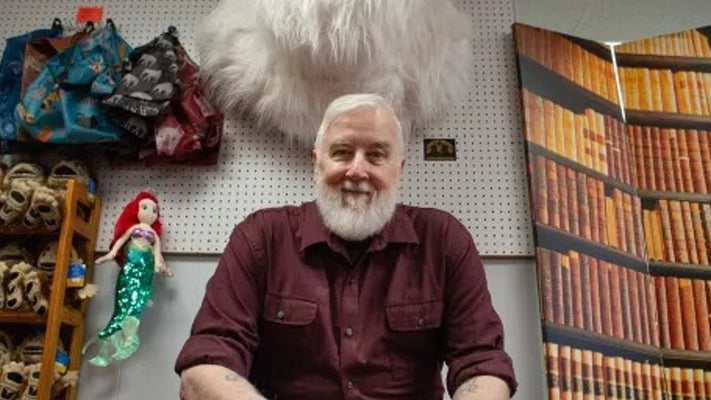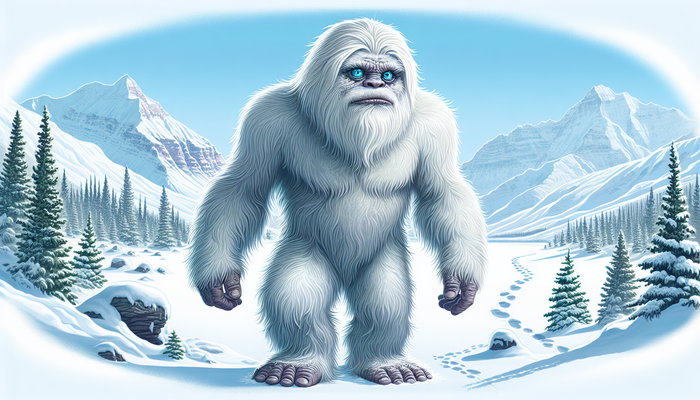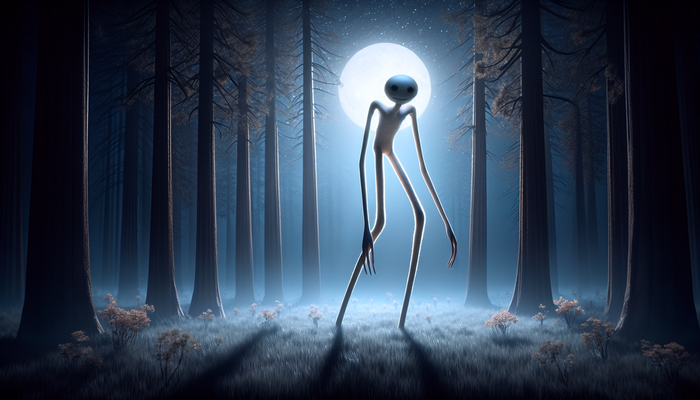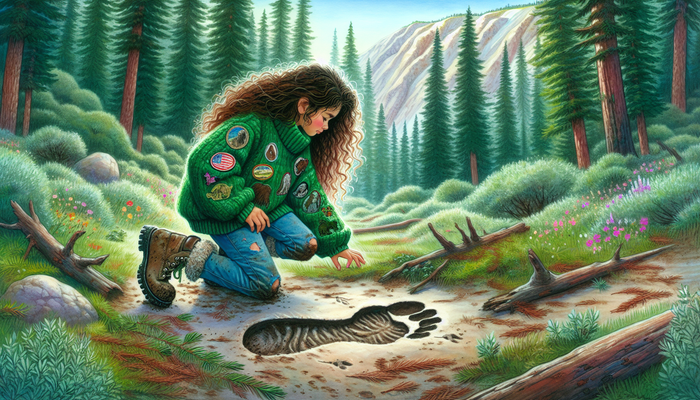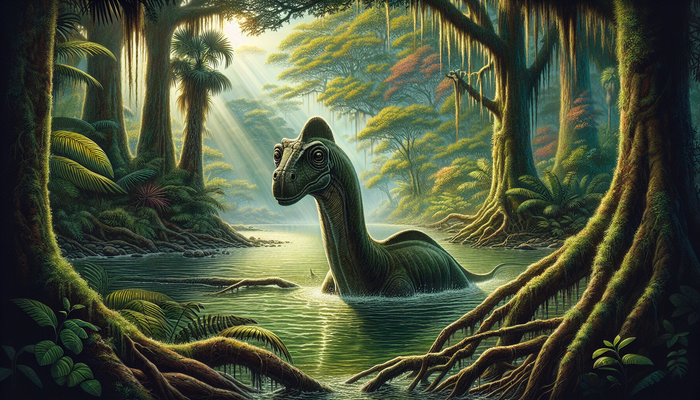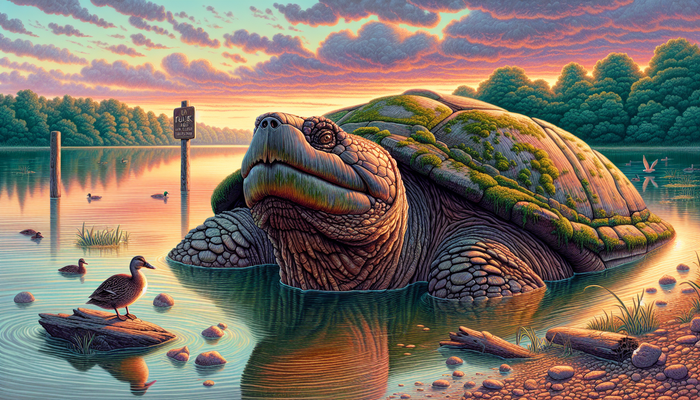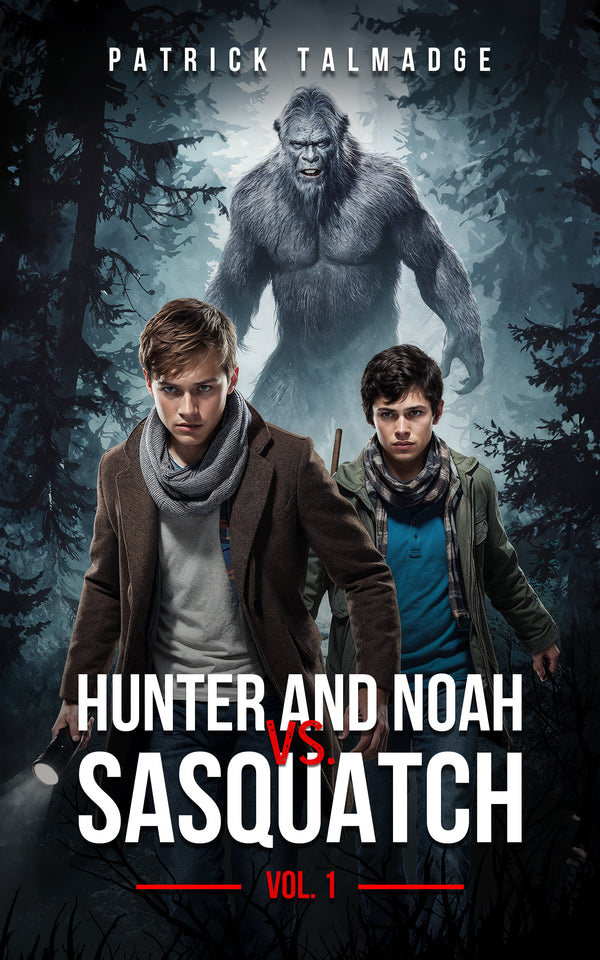The Monster of Monterey Bay
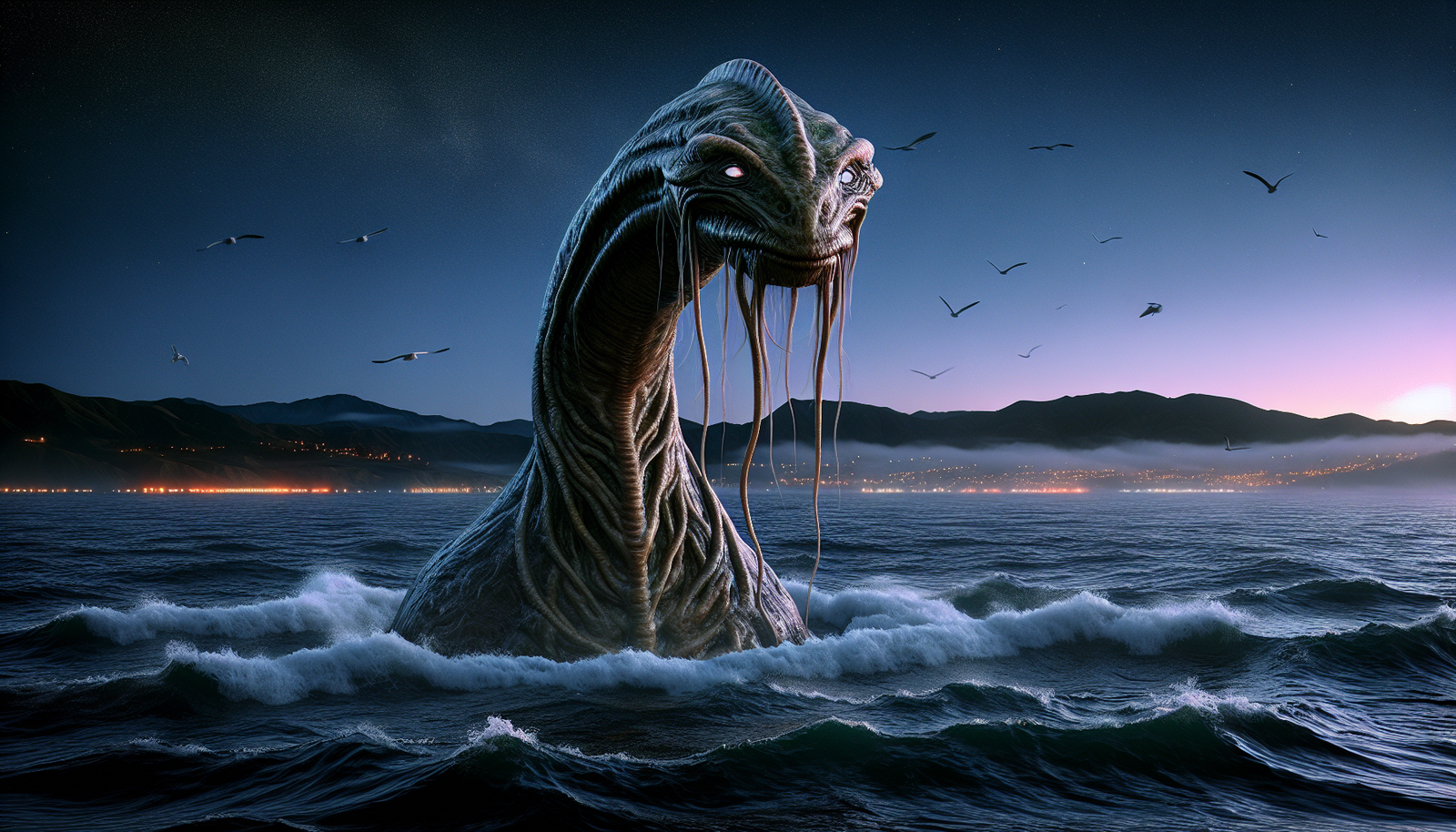
By Lucas Jennings, Cryptozoologist
Throughout history, tales of sea monsters have captured the human imagination, stirring a potent mix of fear and fascination. From the kraken of Scandinavian lore to the Loch Ness monster of Scotland, these cryptozoological creatures have become the stuff of legend, their stories passed down through generations. Among these enigmatic beings, the "Monster of Monterey Bay" stands out as one of California's most intriguing and persistent mysteries. Affectionately nicknamed "Bobo" or the "Old Man of Monterey Bay," this elusive creature has been making waves in the imaginations of central California coast residents for nearly a century.
As an adventurous naturalist with a passion for the unexplained, I've long been drawn to the legend of Bobo. The idea that an unknown creature could be lurking in the depths of Monterey Bay, evading scientific classification and defying conventional wisdom, is precisely the kind of mystery that ignites my curiosity. Over the years, I've pored over eyewitness accounts, delved into historical records, and even ventured out onto the bay myself, all in an effort to unravel the enigma of this cryptozoological icon.
In this article, we'll embark on a deep dive into the origins, evolution, and cultural impact of the Bobo legend. We'll explore how a strange carcass discovered on a Santa Cruz beach in 1925 spawned an enduring tale of mystery and wonder, and how the legend has grown and transformed over the decades. Along the way, we'll grapple with the questions that have long haunted this cryptozoological case: What is the true nature of the creature known as Bobo? Is it a relic from the prehistoric past, a yet-undiscovered species, or something else entirely? And what does the enduring fascination with this cryptid reveal about our relationship with the unknown?
So join me on this journey into the heart of a legend, as we attempt to unravel the mystery of the Monster of Monterey Bay. Whether you're a skeptic or a believer, a lover of local lore or a seeker of scientific truth, there's something here to captivate your imagination and make you ponder the mysteries that still lurk in the depths of our world's oceans.
The Carcass on the Beach: 1925 Origins
The Bobo legend can be traced back to a bizarre discovery on a foggy morning in 1925. On the sandy expanse of Moore's Beach (now known as Natural Bridges State Beach) in Santa Cruz, beachgoers stumbled upon a scene that seemed to defy explanation. There, stretched out on the shore, lay the remains of a strange creature, its form mangled and decomposing, yet still hauntingly intact.
As word of the discovery spread, crowds of curious onlookers flocked to the beach, eager to catch a glimpse of the mysterious carcass. And what a sight it was! The creature was estimated to be around 30-50 feet in length, with a serpentine neck that stretched an astonishing 20-30 feet. Its head, described as being as large as a person, bore a peculiar resemblance to that of a duck, with a long, tapering bill. The body was thick and barrel-shaped, with what appeared to be elephant-like legs, complete with "ivory toenails." A powerful, whale-like tail completed the bizarre picture.
But perhaps the most striking aspect of the carcass was its stench. The pungent odor of decomposition hung heavy in the air, a testament to the advanced state of decay. Yet even as the flesh sloughed away, the creature's strange anatomy remained discernible, fueling wild speculation about its origins and identity.
Theories abounded as to what this creature might be. Some suggested it was a prehistoric plesiosaur, a marine reptile thought to have gone extinct millions of years ago. Others speculated it could be a yet-undiscovered species, a relic from the ocean's depths that had somehow escaped scientific notice. The carcass quickly became a sensation, drawing the attention of both the public and the scientific community.
Enter E.L. Wallace, a self-proclaimed naturalist who claimed to have twice served as president of the Natural History Society of British Columbia. Upon examining the carcass, Wallace made a bold declaration: this, he claimed, was no ordinary sea creature, but a genuine plesiosaur, preserved through the ages in glacial ice. According to Wallace's theory, the animal had been frozen in time, only to thaw out and wash ashore in the modern era.
It was a fantastic notion, one that captured the public's imagination and fueled even more intense speculation about the carcass's identity. However, there was one significant problem with Wallace's claim: no one could verify his credentials or even his identity. The man seemed to have emerged from nowhere, making his dramatic pronouncement before vanishing just as quickly. To this day, the true nature of "E.L. Wallace" remains as much a mystery as the creature he purported to identify.
As the debate raged on, scientists from the California Academy of Sciences in San Francisco arrived to conduct their own analysis of the remains. They carefully removed the creature's head, transporting it back to the Academy for further study. After a thorough examination of the skull, the scientists reached a conclusion that was far less fantastical, but no less intriguing, than Wallace's plesiosaur theory.
The carcass, they determined, was most likely that of a Baird's beaked whale, a rare, deep-diving species that was little known at the time. These elusive whales, which can grow up to 40 feet in length, were seldom seen and poorly understood, making them a plausible candidate for the mysterious remains.
Yet even as the scientific consensus pointed towards a beaked whale, questions lingered. The carcass's strange proportions, with its elongated neck and duck-like head, didn't quite seem to fit with the known anatomy of these cetaceans. Some researchers noted the lack of teeth, the unusual skin texture, and the presence of what appeared to be flippers or fins along the body - features that seemed inconsistent with a whale.
To this day, the California Academy of Sciences holds the creature's skull in its collection, a tangible reminder of the enduring mystery. While the official identification may have been made, there are those who still wonder if the true nature of the carcass might be more complex than it appears. Could there be more to the story than a simple case of mistaken identity?
As we'll see, the 1925 carcass was just the beginning of the Bobo legend. Over the decades that followed, the Monster of Monterey Bay would continue to make its presence known, surfacing in eyewitness accounts and becoming a fixture of local lore. The questions raised by that strange discovery on the beach would echo through the years, fueling a fascination that endures to this day.
The Legend Grows: Sightings Through the Decades
In the years following the 1925 carcass discovery, the legend of the Monster of Monterey Bay began to take on a life of its own. Eyewitness reports of strange creatures in the bay started to trickle in, each one adding a new layer to the growing mythos surrounding Bobo.
The sightings came from all corners of the bay, from fishermen hauling in their catches to sailors navigating the choppy waters. The descriptions varied in their specifics, but certain commonalities emerged. Witnesses often spoke of a creature with a barrel-shaped body, a horse-like head, and a distinctive duck-like bill. Some even described the animal as having a sad, almost ape-like face, with soulful eyes that seemed to convey a deep intelligence.
One of the most dramatic encounters occurred in the late 1930s, when the crew of the sardine fishing boat Dante Alighieri had a face-to-face meeting with the beast. As the boat crossed the bay, the 12-man crew suddenly found themselves in the presence of an enormous creature, its head rising from the waves just a stone's throw from their vessel.
The men watched in awe as the animal regarded them with what they described as a "mournful" gaze. Its face, they said, was a staggering 4 feet wide, perched atop a slender neck that stretched an estimated 12 feet above the water. Along its sides, the crew spotted what appeared to be flippers, gently undulating in the current.
For a moment, the creature and the crew regarded each other in silence. Then, with a sudden snort, the beast rolled over and disappeared beneath the surface, leaving the men to marvel at what they had just witnessed. The encounter left a deep impression on the crew, and their tale quickly spread throughout the fishing community.
Another fisherman, Sal Colletto, had his own series of run-ins with the creature. On multiple occasions, Colletto claimed to have spotted Bobo while out on the bay, including one particularly harrowing encounter off the coast of Moss Landing. There, he said, he came face to face with an enormous head, easily the size of a 50-gallon drum, with a distinctive duck-like bill protruding from its face.
Colletto was so shaken by the experience that he immediately gunned his engine and fled, convinced that this creature was responsible for the recent disappearances of several local fishermen. For years afterwards, he kept his sightings a secret, fearful of being labeled as crazy or delusional.
But as the 1940s dawned, the legend of Bobo exploded into the public consciousness. Sightings of the creature became a regular feature in the pages of the Santa Cruz Sentinel, with each new report adding fuel to the growing fire of public fascination. Witnesses came forward from some of the region's most prominent fishing families, including the Stagnaros, lend credence to the idea that something strange was indeed lurking in the waters of the bay.
Curiously, many of the sightings seemed to follow a distinct pattern. Bobo, it was said, had a penchant for surfacing on calm days, often just before a storm was due to roll in. Some speculated that the creature might be sensitive to changes in air pressure, using its appearances as a way to gauge the coming weather. Others suggested that Bobo simply enjoyed basking in the sun on clear days, taking advantage of the brief windows of tranquility before the winds and waves picked up.
Regardless of the reason, one thing was clear: encountering Bobo was not for the faint of heart. Those who claimed to have seen the creature often spoke of the profound emotional impact of the experience. They described the animal's gaze as "haunting," "mournful," or even "baleful," as if it carried the weight of the ages in its eyes. Some witnesses were left shaken for days or even weeks after their encounters, unable to shake the feeling that they had brushed up against something truly extraordinary.
As the years wore on, the sightings continued, albeit more sporadically. Through the 1960s and beyond, Bobo would make occasional appearances, surfacing in the tales of sailors, fishermen, and beachgoers alike. Each new report added another thread to the tapestry of the legend, weaving together a portrait of a creature that was at once elusive and unforgettable.
Today, Bobo has become something of a beloved mascot for the Monterey Bay region. The creature's likeness can be found in local art and lore, from the whimsical "Monster of Monterey" sculpture that graces the Santa Cruz waterfront to the countless stories and anecdotes that circulate among residents and visitors alike.
But for all the lighthearted fun that surrounds the legend today, there's no denying the enduring power of the Bobo mythos. The sightings and encounters of decades past have left an indelible mark on the collective psyche of the region, a testament to the abiding human fascination with the unknown and the unexplained.
As we continue to explore the mystery of Bobo, we must grapple with the questions that have long haunted this legend. What is the true nature of this creature, and what might its presence in the bay signify? Are the sightings the product of misidentification and exaggeration, or could there be a kernel of truth to the tales? And what does our enduring fascination with this cryptozoological icon say about our relationship with the natural world and the mysteries that still lurk in its depths?
Unraveling the Mystery: Possible Explanations
As an adventurous naturalist, I've always been drawn to the challenge of unraveling cryptozoological mysteries like the legend of Bobo. Over the years, I've encountered my fair share of skeptics and believers alike, each with their own theories and explanations for what might lie behind the enduring mythos of the Monster of Monterey Bay.
On the skeptical side of the spectrum, there are those who dismiss the Bobo legend as nothing more than a mix of hoaxes, misidentifications, and exaggerated fishermen's tales. After all, the ocean is a vast and complex ecosystem, home to an incredible diversity of life that is still being discovered and cataloged to this day. Is it really so far-fetched to think that a few unfamiliar creatures, glimpsed briefly at the surface, could spawn a legend as enduring as Bobo?
Consider the case of the Baird's beaked whale, the species that scientists ultimately identified as the likely source of the 1925 carcass. At the time, these deep-diving cetaceans were little known and poorly understood, with only a handful of specimens available for study. Even today, they remain somewhat enigmatic, with much of their behavior and ecology still shrouded in mystery.
It's not hard to imagine how a fleeting glimpse of one of these animals, with their elongated beaks and sleek, muscular bodies, could be misinterpreted as something more fantastical. The same could be said for other deep-sea denizens that occasionally venture into the shallower waters of the bay, from the bizarre oarfish with its ribbon-like body to the massive elephant seals that haul out on the region's beaches.
And then there are the sharks, those sleek and often misunderstood predators of the deep. Species like the basking shark and the great white are known to frequent the waters of Monterey Bay, their distinctive dorsal fins occasionally slicing through the surface in a manner that could easily be mistaken for something more monstrous.
But for all the skepticism, there are also those who maintain that the legend of Bobo hints at something more profound. These believers point to the consistency of the eyewitness descriptions, the sheer number of sightings over the years, and the emotional impact that encounters with the creature seem to have on those who experience them.
Could it be, they ask, that there really is an undiscovered species lurking in the depths of the bay, a relic from a bygone era that has somehow managed to evade scientific detection? It's a tantalizing notion, one that speaks to the enduring human fascination with the unknown and the unexplained.
After all, the ocean is a vast and largely uncharted realm, a world unto itself that we have only begun to explore and understand. Even with all the advances of modern science, we have still only scratched the surface of the marine environment, with new species being discovered on a regular basis.
Who's to say that a creature like Bobo couldn't exist in the deep, dark waters of the Monterey Bay submarine canyon, a chasm that plunges more than two miles beneath the surface?
From Bigfoot to UFOs: Hangar 1 Publishing Has You Covered!
Explore Untold Stories: Venture into the world of UFOs, cryptids, Bigfoot, and beyond. Every story is a journey into the extraordinary.
Immersive Book Technology: Experience real videos, sights, and sounds within our books. Its not just reading; its an adventure.


